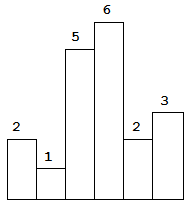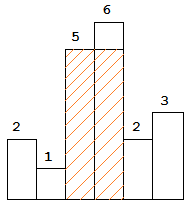为什么要有TextureView
它是在4.0之后出现的用于替代surfaceView。
surfaceView的工作方式是创建一个自己的窗口,跟应用窗口是平级的,也就是说它不像Button之类的可以放在Relativelayout里面,这样surfaceView就有了一个自己的优势,它自己刷新的时候不需要重回应用窗口。
公司有写好的前端,其中包括
android端也希望可以实现相同的功能,此时想到的可能就是通过webview直接加载一个url就可以了,简单快捷。但是产品希望用户在没有网络的情况下也可以使用,直接加载url的方案肯定是行不通的。此时想到的方案是把前端的代码build到apk中,也就是把前端代码放在assets目录中。
方案确定之后开始爬坑~
将前端build之后生成的dist文件夹copy到assets中,之后使用webview加载assets中的入口html。
加载之后webview一片空白
问题出在了前端build之后的引用资源(css,js等)路径上。前端配置文件中assetsPublic的属性为“/”,对应的是根目录,而引用的资源文件static/css/xx.css目录和index.html是同级的,去根目录下找自然就找不到资源。修改配置文件中的assetsPublic属性为“./”,再重新build解决问题。
加载webview空白的问题,我们是如何定位到的呢。其实chrome提供了调试andorid WebView的功能,inspect之后可以在console中看到报错信息。至于如何调试,过程非常简单,两三步就可以,想自己体验的可以百度下,个人感觉还是非常实用的~(注意在webView中设置debug模式为true)
有两种方案可以选择:
webView加载assets中的静态html使用的是file协议,如果在index.html中再去加载http协议的页面或者发送ajax请求都会有跨域的问题。
实际项目中加载model使用到了http协议。
方案:可以使用NanoHttpd或者AndroidAsync在app中搭建本地服务器。
webView使用loadUtl(http)的形式加载index.html,这样统一使用http协议。
NanoHttpd不支持ttf以及woff等格式,最终使用了AndroidAsync跑通了demo。
具体可以参考demo中的代码或者google 百度。
要求提供pb格式的model,之后使用tensorflowLite(tensorFlow对android的解决方案)去跟model交互,交互完成之后再去跟前端h5交互。
dist放在本地之后webview直接load一直担心vue build之后生成的dist中的js文件加了类似android的混淆,可能h5跟android交互会有问题,测试证明我的担心是多余的😓。交互跟直接load服务器中的h5是一样的。可以参考下:
https://juejin.im/post/5b7d30dfe51d4538b2046d63
okhttp拦截器
RetryAndFollowUpInterceptor
1. 创建streamAllocation
2. 调用proceed 进行网络请求
3. 根据响应结果判断是否重新请求
4. 调用下一个拦截器,对response处理,返回给上一个拦截器
BridgeInterceptor
修饰request,添加请求头
进行网络请求
CacheInterceptor
ConnectInterceptor
CallServerInterceptor
1.创建拦截器,放入list
2.创建拦截器链RealInterceptorChain,执行proceed
getResponseWithInterceptorChain
proceed
分发器:
给定一个仅包含 0 和 1 的二维二进制矩阵,找出只包含 1 的最大矩形,并返回其面积。
示例:
1 | 输入: |
解法:
参考84题
1 | class Solution { |
给定 n 个非负整数,用来表示柱状图中各个柱子的高度。每个柱子彼此相邻,且宽度为 1 。
求在该柱状图中,能够勾勒出来的矩形的最大面积。

以上是柱状图的示例,其中每个柱子的宽度为 1,给定的高度为 [2,1,5,6,2,3]。

图中阴影部分为所能勾勒出的最大矩形面积,其面积为 10 个单位。
示例:
1 | 输入: [2,1,5,6,2,3] |
解法一:遍历每一种可能的高度(n*n)
1 | class Solution { |
解法二:使用递增栈(2*n)
1 | class Solution { |
https://developer.mozilla.org/zh-CN/docs/Web/SVG/Tutorial
https://brucewar.gitbooks.io/svg-tutorial/33.SVG%E5%8F%98%E6%8D%A2.html
接口:
单一元素:
1 | /** |
组合元素:
1 | /** |
使用openCV获取灰度图像:0(黑)~255(白)
将该图像按照灰度值分层,每一层是一个0,1二维数组:1表示绘制,0表示不绘制,之后绘制每一层
先绘制颜色最深的那一层。
在二维数组中找一个随机点,从该点出发依次向上下左右四个方向探测,如果找到需要绘制的点,那么再去找该点所在的区域中所有的跟该点绘制次数相同的点,之后按照随机的mask去绘制找到的点(注意点的颜色由该位置的已经绘制的次数决定)。遍历完该点的4个方向之后,再遍历该点左下位置的点,直到超出边界,之后再去遍历该点右上位置的点,直到超出边界,这样就遍历完了一层。
之后再遍历下一层,直到遍历完所有层。
上面提到的mask是预先生成的蒙板。具体可以去看源代码,非常简单。

